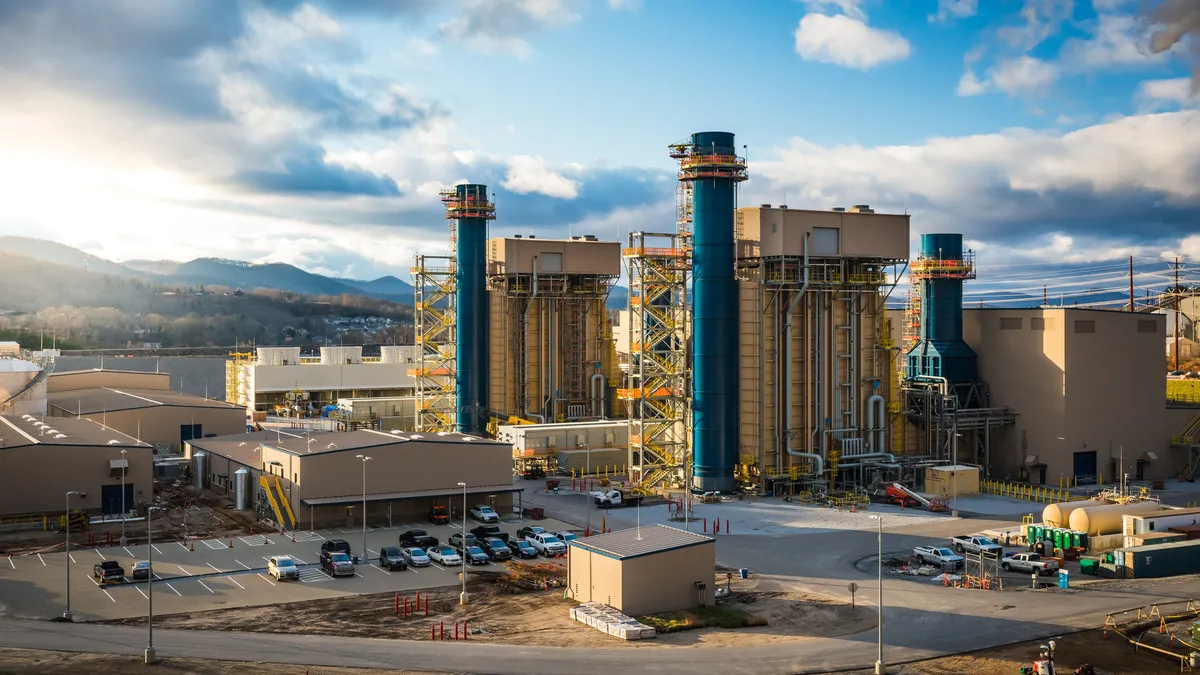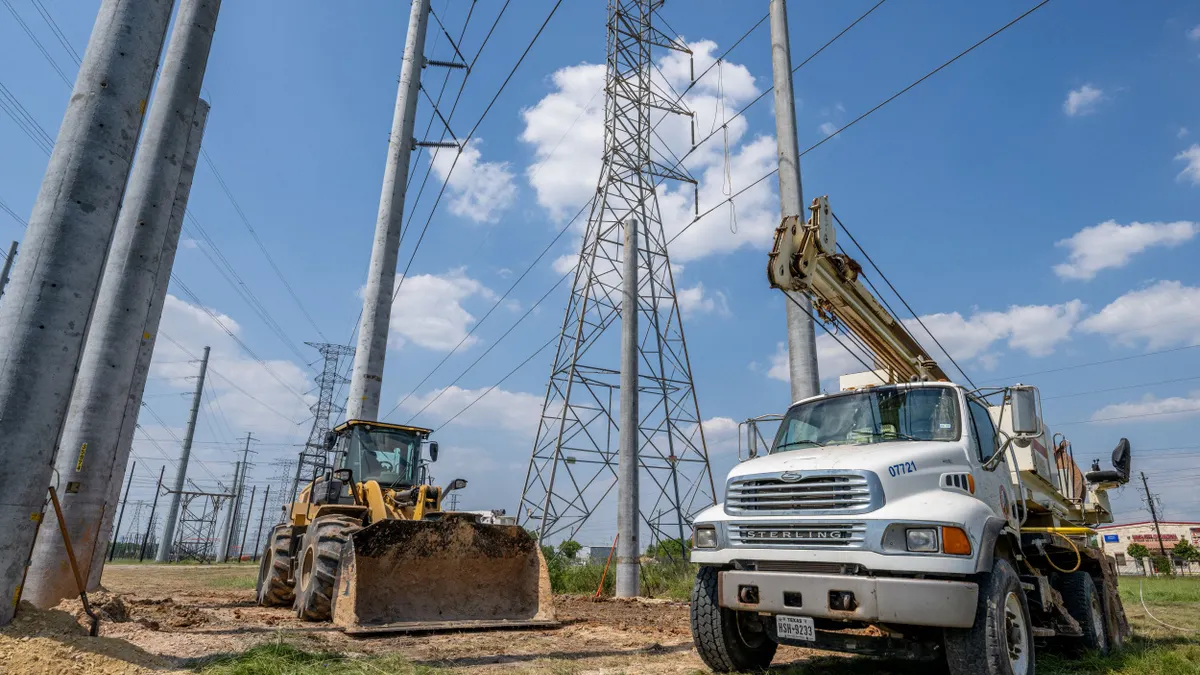The following is a guest post from Mark Higgins, Chief Operating Officer of Strategen Consulting. If you are interested in submitting a viewpoint article, please review these guidelines.
Strategen recently had the opportunity to work with the Commonwealth Scientific and Industrial Research Organisation (CSIRO), Australia’s national science agency, and Energy Networks Australia, the national industry association representing Australia’s electricity transmission and distribution businesses, on Australia’s effort to plan for a radically decarbonized grid in 2050.
I view their effort as being globally unique and a model worth emulating in other parts of the world. The reason: Australia’s range of outcomes in 2050 and least-regrets steps to future-proof the grid all have one thing in common: consumer is king.
Australia is in the throes of a consumer energy revolution that is, in many respects, at the forefront of trends transforming how the world produces and consumes its energy.
Australia leads the world in distributed energy resource adoption. With a national average of 15% rooftop solar PV penetration, Australia’s consumers are more than twice as likely to have rooftop solar as the country with the second highest rooftop solar penetration rate (Belgium, 7%). Australia’s electric power industry is therefore likely to require regulatory and business model transformation much earlier than most other regions of the world. However, Australia is fortunate to have national agencies and trade organizations that were foresighted enough to sponsor a very thorough and deliberate process to make sure the grid adapts to these changes in a manner that is fair, minimizes costs to consumers, allows for more choice and control, and enables deep decarbonization.
From my standpoint, using 2050 as the starting point for an analysis helped frame the dialogue in a productive way. In contrast to the “zero sum” policy battles that are so pervasive in the U.S., stakeholders in Australia were able to more consistently align around the conclusion that the grid would look quite different in 2050 than it does today.
The Electricity Network Transformation Roadmap: Identifying a no-regrets roadmap for Australia
With a widely agreed lens on the plausible future established, CSIRO partnered with Energy Networks Australia to take the next step to develop a comprehensive roadmap identifying no-regrets actions Australia should be taking over the next decade to position its grid to accommodate the range of potential outcomes in 2050.
Key issues that need to be addressed in Australia’s grid between now and 2027 include ensuring the system has the ability to accommodate more than 40% of consumers utilizing DER, a 40% system-wide GHG reduction, robust cybersecurity and physical security/safety, efficient market responses, all the while ensuring there are sufficient customer protections for those who need them most. Additionally, given that Australia has perhaps the highest average T&D network costs in the developed world, a reduction in per capita network costs is also a key objective.
The key "swim lanes" evaluated in the Electricity Network Transformation Roadmap (ENTR) process included:
- Consumer oriented electricity
- Power system security
- Carbon abatement
- Incentives & network regulation
- Intelligent networks & markets
The analysis, power flow and economic modeling, and stakeholder engagement for each of the swim lanes resulted in a series of concrete recommendations of near term steps (within the next 5 years) and medium term steps (between 2022-2027).
Recommendations, which can be found here, covered a wide range of topics including developing a nationally integrated carbon policy framework, facilitating standalone power systems and microgrids to reduce network costs, developing intelligent distribution-level analytics that can efficiently integrate and communicate with the bulk system, and building distribution platforms that can interact with the vast amount of DER on the grid in order to coordinate their activities and manage the grid more efficiently.
Strategen was particularly involved in providing a close look at distribution-level markets and more dynamic retail structures designed to enable economic incentives for DER to contribute to network optimization. Capturing the benefits of DER through a dynamic marketplace with peer-to-grid and, potentially even peer-to-peer trading, will go a long way toward helping network operators enable greater consumer choice, improve customer satisfaction, all while creating a more efficient and lower cost grid.
How the US can learn from Australia's market-based roadmap to DER valuation
Australia is a canary-in-the-coalmine when it comes to DER reshaping the way the grid operates. With 1.6 million residential PV installations as of 2015, some of the highest retail electricity prices in the OECD largely driven by fixed network costs, Australia is faced with a unique challenging in solving for the value of DER on the grid.
The specific challenge is that the economic impact of unmanaged DER deployment is likely to have a much greater cost impact to Australian consumers at a much lower level of penetration than in other global markets, because far less cost is avoided from DER substitution of generation than in places with similar DER penetration levels, such as Hawaii, California, or parts of Europe. Therefore, unlike in markets such as Hawaii, the primary value driver of DER on the grid cannot be to offset variable costs, namely the cost of central generation. Rather, DER must be harnessed methodically to offset the need for new network infrastructure, and eventually to lower the delivered cost of electricity to consumers.
The stakeholder process involved a vigorous analysis of the role of markets vs. controls to harness the role of DER on the grid, and the conclusion of the analysis is that, in the long term, DER must be economically rewarded for the value they provide the grid. This can be accomplished through increasingly sophisticated price signals.
The result, Energy Networks Australia and CSIRO concluded, is a dynamic network optimization market where DER services are traded on both a locational and temporal basis, based on system conditions.
CSIRO asked Strategen to conduct a survey of future visions of the grid around the world, and to look at pilot DERMS projects and innovative DER service valuation and procurement mechanisms, in order to determine some of the global best practices that could be applied to the Australian context. The objective was to develop a roadmap over the next decade that enabled a balanced scorecard of outcomes underpinned by increased consumer choice and control.
Australia, on the other hand, started from the perspective of creating the right tools to optimize the role and value of DER on the grid and enable greater consumer choice and control, while doing so in a no-regrets manner based on the likely range of potential grid outcomes in 2050.
Through this ‘balanced scorecard’ lens, CSIRO and Energy Networks Australia developed a roadmap of the standards, controls and communication infrastructure necessary to support Australia’s future grid, and the advanced retail markets necessary to enable DERs to be valued for the services they provide.
The roadmap makes a strong case for the development of network optimization markets, given the likely trajectory of Australia’s grid. Tariff reform, and ultimately the potential development of dynamic, digital “network optimization markets” at the distribution level will help bring down non-coincident substation peak demand.
In the long run, roadmap policies are expected to provide more than $400 in savings to the average residential customer per year. All told, total electricity system expenditures in 2050 will drop by about 10% by following the roadmap (from $988 billion to $888 billion).
The roadmap lays out several stages of grid transformation required for the outlined market transformation. The first stage involves implementation of communication protocols between networks and DER, including smart meters, as well as implementation of advanced planning and DER valuation modeling work similar to what’s been happening in California. Once this basic infrastructure is in place, advanced forms of rate design can be put into place, enabling greater alignment of customer demand with supply and the grid’s capabilities.
Implementation of the second stage of the roadmap begins when moderate to high levels of DER are in the system. Stage two involves the provision of DER grid services, perhaps through procurement mechanisms beginning to emerge in places like California and New York – although it should be noted that California’s solicitations for DER to date are just the tip of the iceberg, given they are primarily focused on local capacity and wholesale market participation, with only a few cases of assets being procured for distribution deferral. In addition, distribution level asset optimization and transparent information dissemination is a requirement at this point in the grid transformation. The distribution network optimization market should be under development at this stage as well.
The third stage – likely not occurring for another decade – involves the potential launch of a digital network optimization market, enabling peer-to-grid and perhaps also capable of supporting peer-to-peer market transactions, for energy and potentially other grid services. In our view, some of the mechanisms put into place to manage wholesale market transactions and grid controls can be a good proxy for how the potential distribution-level markets might work. For example, long term needs (such as a peak shaving contract meeting a distribution deferral need) can be addressed through long term contracts with DER, but with a must offer obligation into the distribution level market once it comes into existence. Likewise, automated controls and functionality from smart inverters can be marketized, similarly to how an ancillary service is bought & sold on the market, but during commitment periods directly controlled by the wholesale market operator.
The unification of all forms of procurement mechanisms, controls, and other value streams for DER is, in our view, an essential component of achieving a vibrant, well-functioning grid in a high DER environment. This is because the patchwork of competing signals from various mechanisms being deployed today to value DER may have unintended grid impacts resulting in forecasting errors and higher costs to customers. In addition, these competing signals are much harder for DER operators to manage, and could result in sticker shock for end use customers if, for example, a demand charge threshold was triggered due to participation in a wholesale market.
Key takeaways for the U.S.
Australia’s recent analysis highlights a few key takeaways for the U.S.
First, policymakers around the country should take heed: the transformation of our electric power sector is already well underway, and accelerating. While not all regions are seeing impacts today, the trend is inexorable (regardless of public policy) due to the consumer electronics revolution underway.
Second, a consumer-oriented approach focusing on choice is a win-win for society, grid costs, and the environment. Policies that enable greater choice while encouraging the lowest cost outcomes can be successfully implemented, and result in a cleaner grid as well. This is especially true given that consumer choice to manage costs through DER almost always involves implementation of clean energy resources.
Third, enabling value capture from advanced grid technologies can absolutely be a win-win for regulated utilities and network operators. Dynamic retail energy markets hold the potential to unlock a “prosumer” future that lowers costs for both participating and non-participating customers, because energy supply and the operational needs of the grid can be met with a much larger basket of low cost resources.
Furthermore, by positioning themselves as enablers of a prosumer future, utilities in the U.S. could potentially unlock new revenue streams from managing the retail energy marketplace. Utilities in the U.S. are particularly well-positioned to support this, given in most markets they also have a relationship with the retail customer. This is not to say that third party providers will lose out, however. An open marketplace should create far greater opportunities for vibrant competition amongst DER providers.
Fourth, while enabling technology is required in order to implement prosumer-centric retail energy market platforms, investment in grid infrastructure can be successfully implemented in a no-regrets manner with proper planning and a thorough, cost/benefit based roadmap. Each stage of grid transformation has different needs, and the most expensive, complex solutions such as a fully dynamic retail market platform isn’t needed on a wide scale until DER penetration is above a certain threshold. In the meantime, most needs can be met cost effectively with advanced and more transparent distribution grid planning, improved informatics and communication, enhanced rate structures, and utility-driven DER procurement mechanisms for focused and specific grid needs.
In any case, Australia may be the first country to embark upon such a comprehensive, long term process to plan for the transformation of its grid, but it shouldn’t be the last. Such a forward-thinking approach is critical to ensuring the competitiveness of the electric power sector – and the prosperity of our nation – throughout the 21st century.
Mark Higgins is Chief Operating Officer of Strategen Consulting, a clean energy consulting firm. Prior to Strategen, Mark led PG&E’s work in key policy areas including interconnection and transmission planning, and dealt with technologies ranging from distributed energy storage and demand response to large scale renewables developments.





















